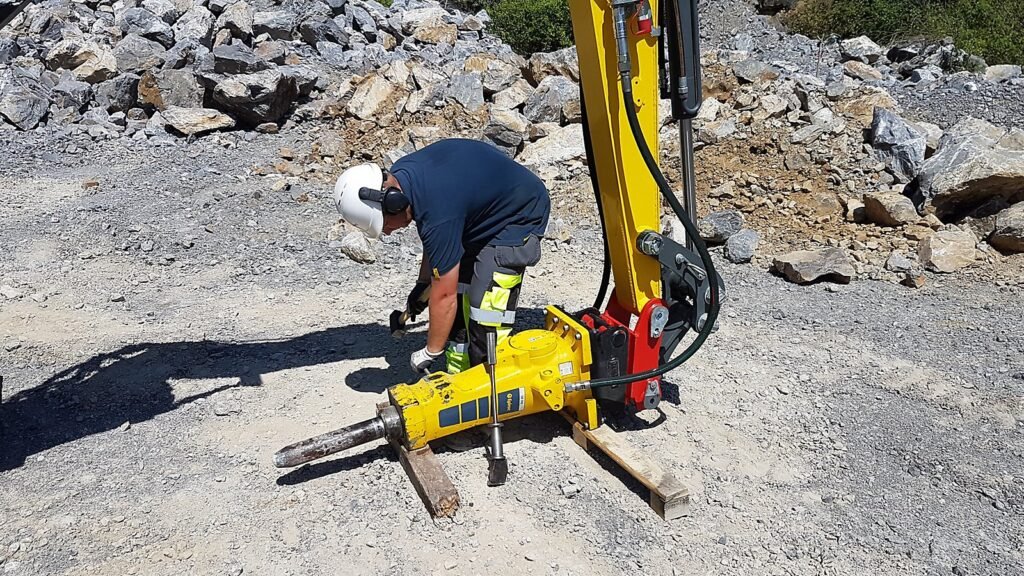ROCK BREAKER REPAIRS
With its ability to effectively break through rock, concrete, and other difficult materials, rock breakers are indispensable instruments in the mining, construction, and demolition sectors. But because of their heavy use, they are prone to wear and tear, which may result in malfunctions or decreased performance.
Rock Breaker Repairs
Regular maintenance is crucial for rock breakers to operate efficiently. Timely identification of common issues and following maintenance guidelines can prolong their lifespan, minimize downtime, and ensure safe operation.
Opt for high-quality parts and, when necessary, seek professional help for complex repairs or full overhauls. Routine inspections help catch potential problems early, ensuring reliable performance and safety.

Repair Procedures for Rock Breakers
Inspection and Diagnosis
Inspect the rock breaker carefully using diagnostic tools to check for pressure loss, leaks, or unusual noises. This helps identify areas that need attention.
Disassembly
Disassemble the equipment with caution, examining each component’s condition. Label parts and document their positions for proper reassembly. Always use the recommended tools and adhere to the manufacturer’s guidelines to avoid causing damage.
Cleaning
Clean all components thoroughly to remove dirt, debris, and old lubricant. This is essential for accurate inspection and helps prevent contamination during reassembly. Use appropriate cleaning solutions.
Component Inspection
Inspect each part for wear, cracks, or other signs of damage. Focus on critical components like the piston, bushings, seals, and chisel. Replace any damaged parts with genuine replacements to ensure continued performance.
Seal and Bushing Replacement
Replace worn seals and bushings to prevent leaks and reduce friction. Always use the correct seals as recommended by the manufacturer to preserve the hydraulic system’s integrity.
Piston and Chisel Maintenance
Check the piston for scoring or other damage and replace it if needed. Inspect the chisel for wear and ensure it’s suitable for the application. Proper lubrication and careful installation are vital for smooth operation.
Hydraulic System Repair
If there are hydraulic system issues, such as leaks or low pressure, repair or replace damaged hoses, fittings, and valves. Bleed the system to remove air pockets and restore proper pressure levels.
Reassembly
Reassemble the rock breaker carefully, ensuring all components are correctly aligned and tightened according to the manufacturer’s guidelines. Replace any fasteners and gaskets as needed to prevent leaks and maintain structural integrity.
Testing and Calibration
Once reassembled, test the rock breaker to confirm proper operation. Check for impact power, hydraulic pressure, and smooth functioning. Adjust nitrogen gas pressure and hydraulic settings as needed to optimize performance.
Final Inspection
Perform a final inspection to ensure all repairs are complete. Look for leaks, unusual noises, and proper tool movement. Verify that all safety features are working correctly.
